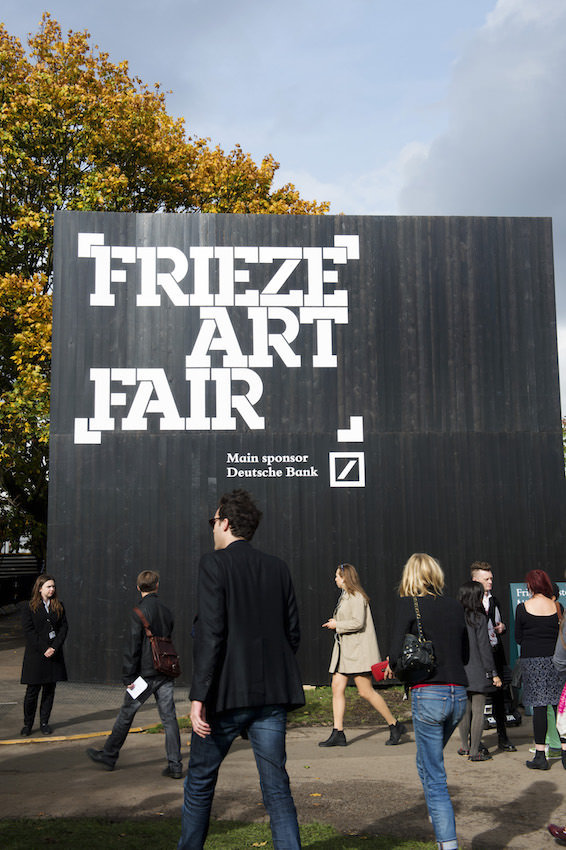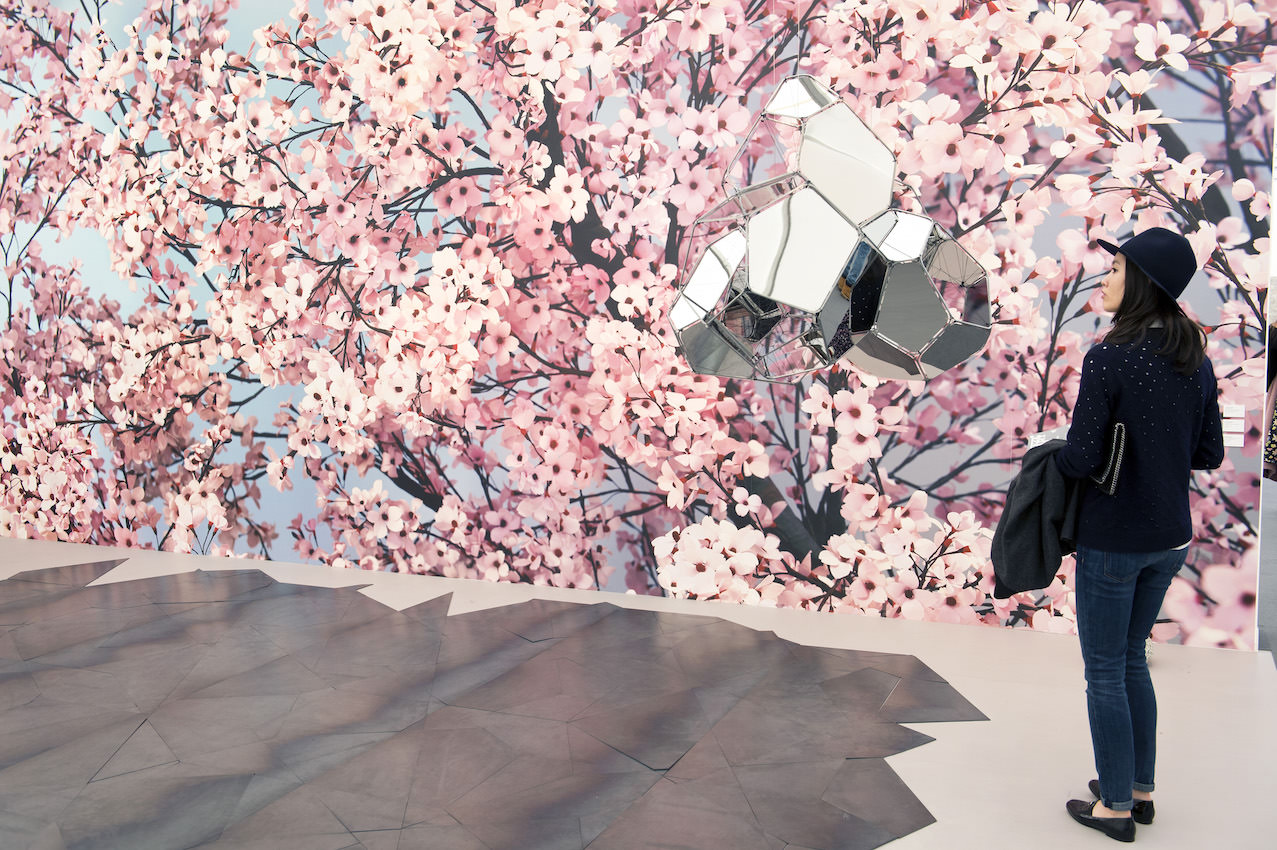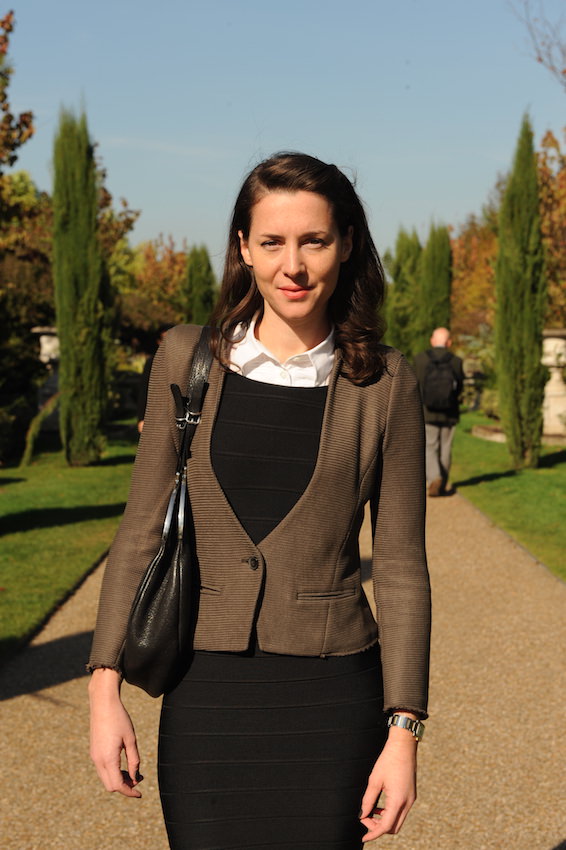The Frieze London and Frieze Masters art fairs are on view this week at Regent’s Park from October 14—17. Whitewall spoke with the new director of the fairs, Victoria Siddall, for our fall 2015 Fashion Issue, out now. Below is an excerpt from the interview.
WHITEWALL: This year you were named the director of Frieze fairs, taking on the position at both New York and London fairs, after your success as the director of Frieze Masters. What kind of day-to-day difference does that role change mean for you?

Courtesy of Linda Nylind for Frieze
VICTORIA SIDDALL: One thing that I am most excited about is working on the contemporary fair again. I started at Frieze 11 years ago, working on Frieze London, and it was an incredibly exciting time to be involved in contemporary art. For the last few years I have been completely focused on Frieze Masters, and that has been a total adventure learning about all these different areas and market specializations. Everything from old masters to medieval sculpture, ancient art to Japanese scrolls, modern art as well 20th century. Now I also am working with Frieze New York, which I have never been involved in and which will be a little discovery for me. It changed the day-to-day immeasurably, working at three fairs instead of one.
WW: An interesting aspect at Frieze Masters is an in-depth vetting process done the day after the installation, where experts sort of give the “okay” on the art before the doors open. Can you tell me about this process?

Courtesy of Linda Nylind for Frieze
VS: Organizing Frieze Masters is different in many ways than putting together a contemporary fair. Things like vetting are incredibly important if you were to buy a piece of ancient art. You want to know what it is, what it says on the label. So there is a whole day before the fair, going around the fair, checking that everything is what is says it is on the label. So it means if you were coming to the fair and you are buying an oil painting or a 19th-century drawing for the first time then you can do so with confidence because you know that it went through a vigorous vetting process.
WW: Frieze London launched in 2003 and was really a breath of fresh air on the art fair circuit. Now it has been around for over a decade. How do you keep that initial spirit alive?

Courtesy of Linda Nylind for Frieze
VS: The fair is unique in various different areas. Part of it is building the fair ourselves and being able to work with great architects, so we have been able to make the fairs look and feel quite special. We bring in the restaurants in the city where the fairs are in, which you cannot do at a convention center. But I think ultimately what makes the fair are the galleries. They are the ones that are bringing the work. We encourage galleries to bring their best work to Frieze—we always have a great array. At the contemporary fairs, the fact that you will see the greatest established galleries next to the young, really exciting galleries in the Upper East Side or Mexico City or Warsaw. You really see that whole range.
WW: How would you describe your relationship with galleries and even individual artists as fair director?
VS: Galleries are the most important people for us. They are the representatives who represent the artist. However, we always wanted the fair to be more geared to artists, and it is no secret that the artists don’t always love art fairs. I think they do make an exception for Frieze because there are a lot of artists attending the fair, and for me particularly it was thrilling seeing how many artists visited Frieze Masters. When Matthew and Amanda started the fair in 2003, the first person they hired was a curator, which says a lot about the Frieze approach. Now we curate a lot of commissioned artists especially for the fair, which we still do to this day both in Frieze London and Frieze New York.
WW: You are also the co-chair at Studio Voltaire, which is an organization that supports underrepresented artists. As the director of a major fair full of blue-chip galleries and artists, do you think it’s equally important to support emerging artists?
VS: I think it has been important for me for a number of reasons. I actually joined the board of Studio Voltaire almost at the same time as I began to start working at Frieze Masters, and for me it provided a great balance because I was much more focused at Frieze in the historical world, but it was great to have that involvement at the other end. It is incredibly vibrant, ambitious innovation that I am proud to be part of and fundraise. It has been really enjoyable and kind of a learning process as well, because you get to see a small portion of how the organization is run.
This article is published in Whitewall‘s fall 2015 Fashion Issue.








